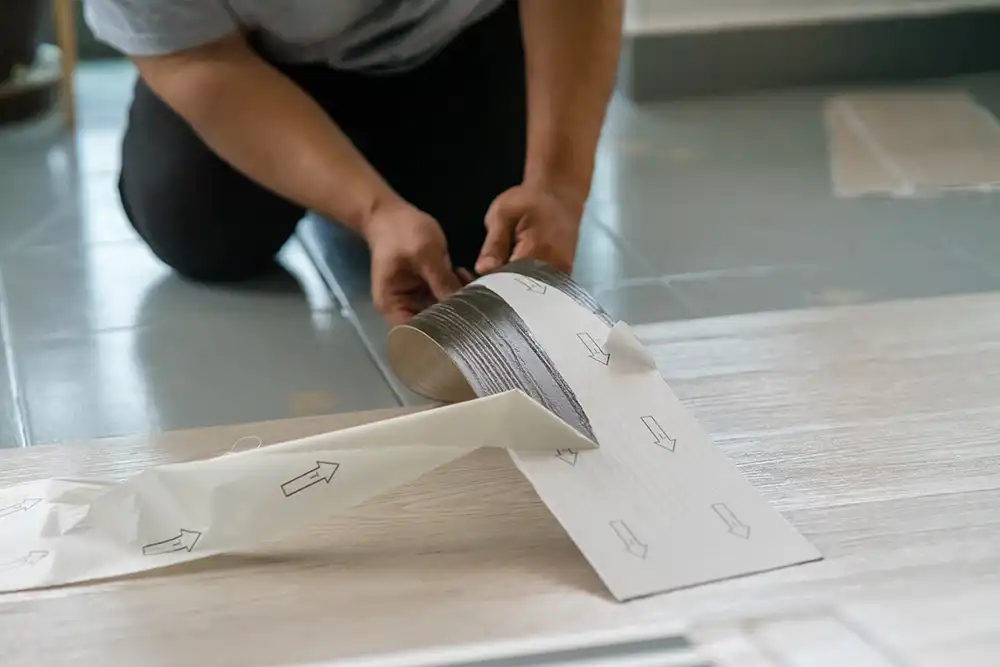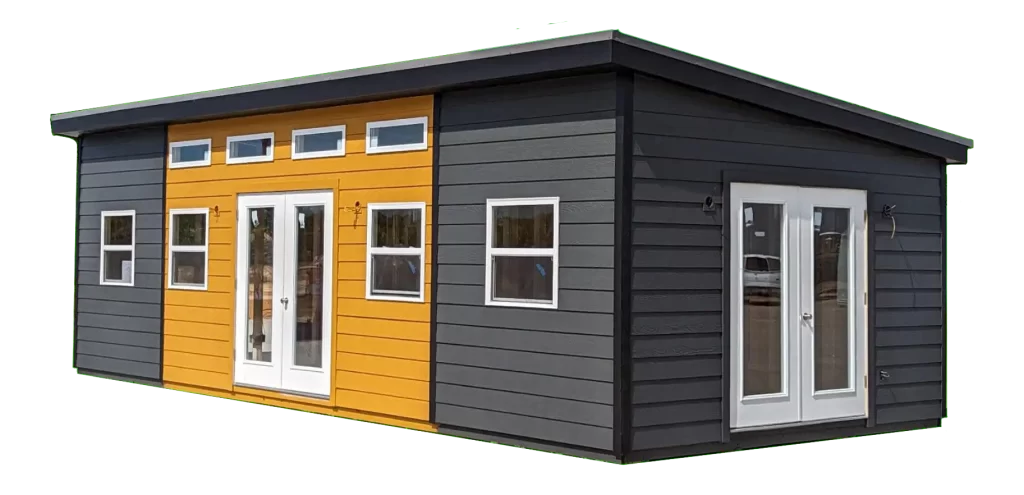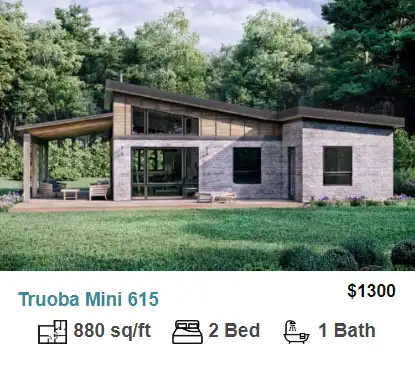Tiny Home Flooring Ranked Best to Worst
The floor is the surface in any home that takes the lion’s share of the abuse. So, what is the best flooring option for your tiny home? Well, it sure isn’t marble! In fact, the heavier and more rigid a material is the worse it is for tiny home flooring. Tiny homes flex a great deal when they are transported, whether it be a prefab or tiny home on wheels. This flex is the natural enemy of rigid flooring materials. Even site-built tiny homes tend not to be built on slab foundations meaning they will settle over time causing the same flex and the same floor damage problem. After hundreds of tiny home consultations and builds, we have ranked tiny home flooring options from best to worst as follows.
Vinyl
Vinyl is without a doubt the best option for tiny home flooring. It is cost efficient, easy to clean and maintain, comes in a variety of colors and patterns, can flex with the home, and is easy to install.
Vinyl flooring is available in rolls starting at 12’ wide with 15’ wide being commonly available. Roll vinyl flooring is trimmed to fit an entire room at once and glued down for a smooth, solid surface. Price and quality tend to go up with thickness. Be sure to measure twice and cut once with this stuff as you can ruin an entire room’s worth of flooring with one wrong cut!
Vinyl flooring also comes in peel-and-stick tiles and planks. These generally cost more than roll vinyl but are much easier to install and can even be individually replaced.
The only real con to vinyl is resale value. This is particularly true of the budget options, but even high-end vinyl doesn’t have the “sell appeal” of other options.
Carpet
Carpet is a great option for tiny homes with a few caveats. Carpet can range from soft and plush to low pile no-nonsense. It is unaffected by foundation shifts or transport and is easy to install. It also minimizes imperfections in the subfloor better than any of the options. The biggest downside to installing carpet in a tiny home is the indoor/outdoor living factor. Folks with small floorplans tend to make the most of outdoor living spaces. This inevitably means that some of the outdoors is tracked indoors. Carpet is the hardest flooring option to keep clean and is a perfect hiding place for small multi-legged intruders. Carpet is also a poor option for kitchens and bathrooms for obvious reasons.
Another real concern when installing carpet in a tiny home is the necessity to store a vacuum cleaner in the already tight quarters.
Bamboo
Bamboo is a great sustainable flooring option for your tiny home. It has a great contemporary look and the higher-quality stuff is very durable. Bamboo is unfortunately the first flooring option on the list to be susceptible to breaking during a foundation shift or transport. This makes it an unattractive option to tiny homes on wheels or portable shed to tiny home conversions. The good news is it’s not quite as risky as hardwood and epoxy. Bamboo can also be affected by long term exposure to moisture making it a poor choice for bathrooms and even kitchens.
Laminate
Laminate flooring is in a weird place now that quality vinyl planks are available. It is an option to consider if your tiny home build is on a tight budget and you don’t care for roll vinyl, but it leaves a lot to be desired when it comes to tiny homes. Laminate is easy to install with one piece interlocking into the next, no glue or sticking required. The “floating” nature of the floor also makes it handle foundation shifts and transport well. Laminate flooring also comes in a wide variety of colors ans styles. It is however, the most susceptible to water damage on the list. Even the best laminate flooring is far less durable than any of the other tiny home flooring options.
Epoxy
Epoxy flooring is absolutely perfect……for garages and slab foundation houses. But, it is a terrible option for most tiny homes. Epoxy flooring works well on top of concrete because it cures to a very hard and rigid state. These same factors make it challenging for tiny homes, which tend to shift around a bit. The chances of your epoxy floor lasting longer than twelve months without cracking in a tiny home with floor joists or wheels are slim and none.
Hardwood
Hardwood has all of the same problems as a tiny home flooring option as epoxy with the added cons of being expensive and hard to maintain compared to all of the other options. I would only install hardwood on a tiny home with a slab foundation. With that being said, few options compare with beauty of a well finished hardwood floor. The allure of a wood floor in your mountain retreat may prove too much of a temptation to pass on…….and we couldn’t blame you! If you are committed to hardwood, it is advisable to go with the most durable wood and sealer option available. The dimensions of most tiny homes do not lend themselves well to floor sanding and refinishing.
Tile
Tile, whether it be ceramic or stone is the worst possible flooring option for your tiny home. Tile, is a very visually appealing flooring, but it the most fragile on the list when it comes to breaking during foundation shifts or transport. Of the tile materials in this class, travertine would likely hold up the best. If you absolutely must install tile in a tiny home, flexible grout is a must!
Conclusion
So, there you have it, the most popular tiny home flooring options ranked from best to worst. Vinyl is the best option on most fronts with the exception of resale value. Tile is going to be a challenge and is not to an option for the timid! As a general rule, the more flexible a flooring option is, the better it is for a tiny home.
For more information specific to tiny home bathrooms, check out our article, “The Best Tiny Home Bathroom”.
Go forth with your knowledge and dare to live tiny!




